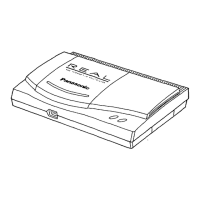Transporting
This unit
is
a
precision-made
device
Take
care
to
protect
it from
vibration
and impact while
moving it In
particular, care must
be
taken
when moving
the
unit together
with a cart, or
it
may
topple
over
If
the unit is
moved suddenly from
a
cold
to a
warm
location, water
vapor may condense in this unit To
correct this problem, turn on
the power
and
wait about
one
hour
for the
moisture
to
evaporate
Always
remove
a
disc before moving the
console
Attachments
When connecting
attachments {control
pad,
etc
),
use
only those
authorized products that display
the 3DO
compatibility
symbol
Note to
CATV system installer
This reminder
is
provided
to
call
the
CATV
system
installer's
attention to Section
820-40
of the NEC
{National
Electrical
Code) which provides guidelines
for
proper grounding and,
in
particular,
specifies that the
cable ground shall be connected to the grounding system
of the
building,
as
close
to the
point of
cable
entry
as
practical
Safety
Object
and Liquid
Entry
Never push objects
of
any kind
into
this
unit through
openings as
they
may touch dangerous voltage points
or
short-out
parts that
could
result
in
a
fire
or
electric
shock
Never
spill liquid
of any
kind on the unit
Power
Sources
This unit should
be
operated only from the
type of
power
source indicated
on the
unit
surface
If
you are
not sure
of
the type
of
power
supply to
your home, consult your
product
dealer
or local power
company
Polarization
This
unit
is equipped
with
a
polarized alternating-current
line
plug {a
plug
having one blade wider than
the
other)
This
plug
will fit
into the
wall
outlet
only
one
way This is
a safety
feature
If you
are unable
to insert the
plug
fully
into the
wall outlet, try
reversing
the plug
If
the
plug
should
still fail
to
fit,
contact
your
electrician
to replace
your
obsolete
wall
outlet
Do not defeat
the
safety
purpose
of the
polarized
plug
Power
Cord Protection
Power
supply
cords
should
be
routed so
that
they
are
not
likely
to
be
walked on or pinched
by
items
placed on
top
of or
against them, with
particular
attention
paid to
cords
at
plugs,
convenience receptacles,
and
the
point
where they
exit
from the
unit
Outdoor
Antenna
Grounding
If
an
outside
antenna or
cable
system
is
connected
to
the
unit,
be sure the
antenna
or cable system is
grounded
so
as
to
provide some protection
against
voltage
surges
and
built-up
static
charges
Article
810
of
the
National
Electrical
Code,
ANSI/NFPA
70,
provides information
with
regard
to
proper grounding of
the mast
and
supporting
structure, grounding of the lead-in wire to
an
antenna
discharge
unit,
size
of
grounding
conductors,
location
of
the antenna-discharge
unit,
connection
to
grounding electrodes,
and
requirements
for
the
grounding
electrode
See
following
diagram
NATIONAL ELECTRICAL
CODE (NEC)
GROUND
CLAMP,
GROUND CLAMPS
ANTENNA LEAD-IN
WIRE
ANTENNA DISCHARGE
UNIT
(NEC
SECTION 810-20)
GROUNDING
CONDUCTORS
(NEC
SECTION 810-21)
POWER
SERVICE
GROUNDING
ELECTRODE
SYSTEM
(NEC ART
250,
PART
H)

